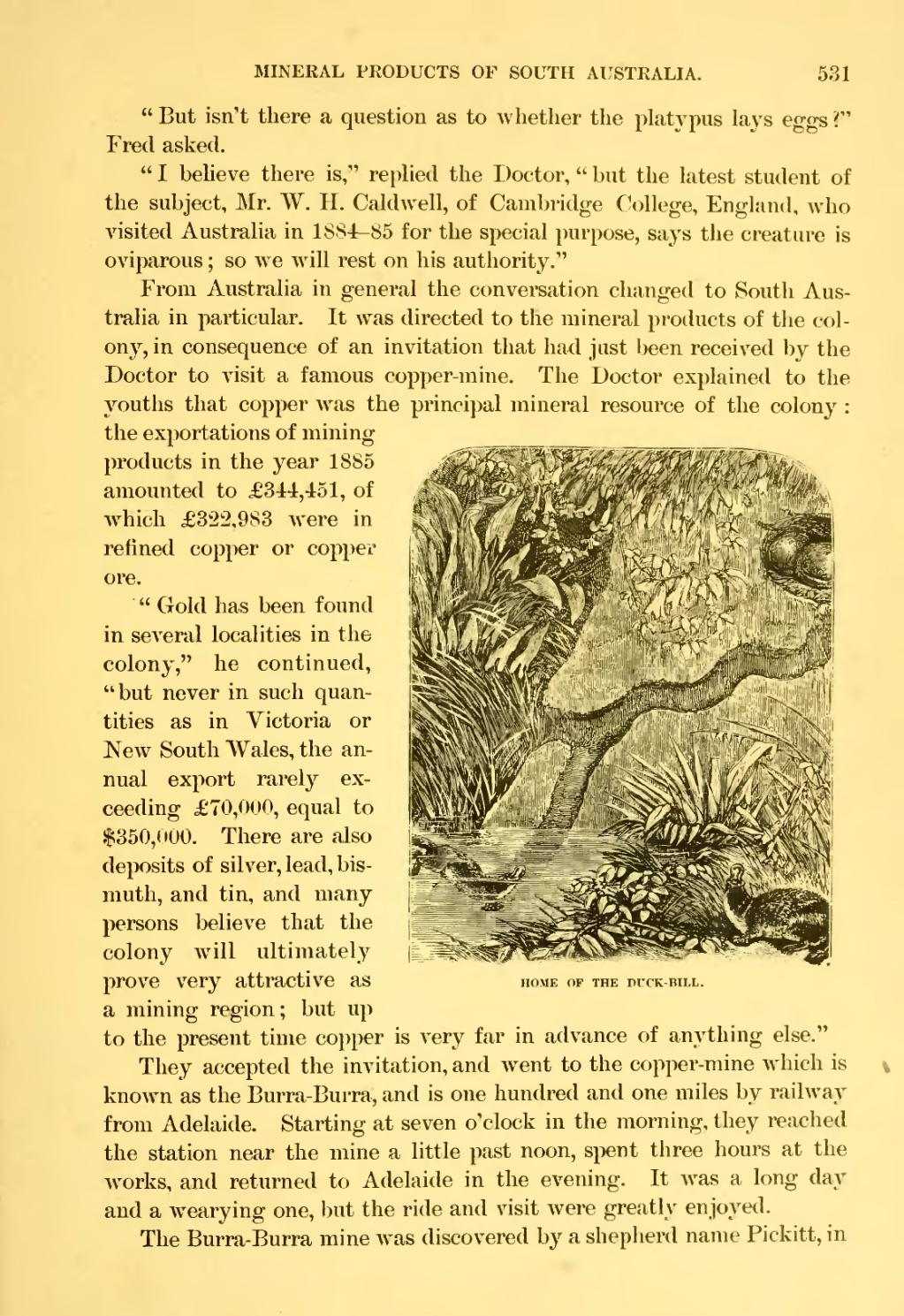"But isn't there a question as to whether the platypus lays eggs?" Fred asked.
"I believe there is," replied the Doctor, "but the latest student of the subject, Mr. W. H. Caldwell, of Cambridge College, England, who visited Australia in 1884–85 for the special purpose, says the creature is oviparous; so we will rest on his authority."
From Australia in general the conversation changed to South Australia in particular. It was directed to the mineral products of the colony, in consequence of an invitation that had just been received by the Doctor to visit a famous copper-mine. The Doctor explained to the youths that copper was the principal mineral resource of the colony: 
HOME OF THE DUCK-BILL.the exportations of mining products in the year 1885 amounted to £344,451, of which £322,983 were in refined copper or copper ore.
"Gold has been found in several localities in the colony," he continued, "but never in such quantities as in Victoria or New South Wales, the annual export rarely exceeding £70,000, equal to $350,000. There are also deposits of silver, lead, bismuth, and tin, and many persons believe that the colony will ultimately prove very attractive as a mining region; but up to the present time copper is very far in advance of anything else."
They accepted the invitation, and went to the copper-mine which is known as the Burra-Burra, and is one hundred and one miles by railway from Adelaide. Starting at seven o'clock in the morning, they reached the station near the mine a little past noon, spent three hours at the works, and returned to Adelaide in the evening. It was a long day and a wearying one, but the ride and visit were greatly enjoyed.
The Burra-Burra mine was discovered by a shepherd name Pickitt, in

